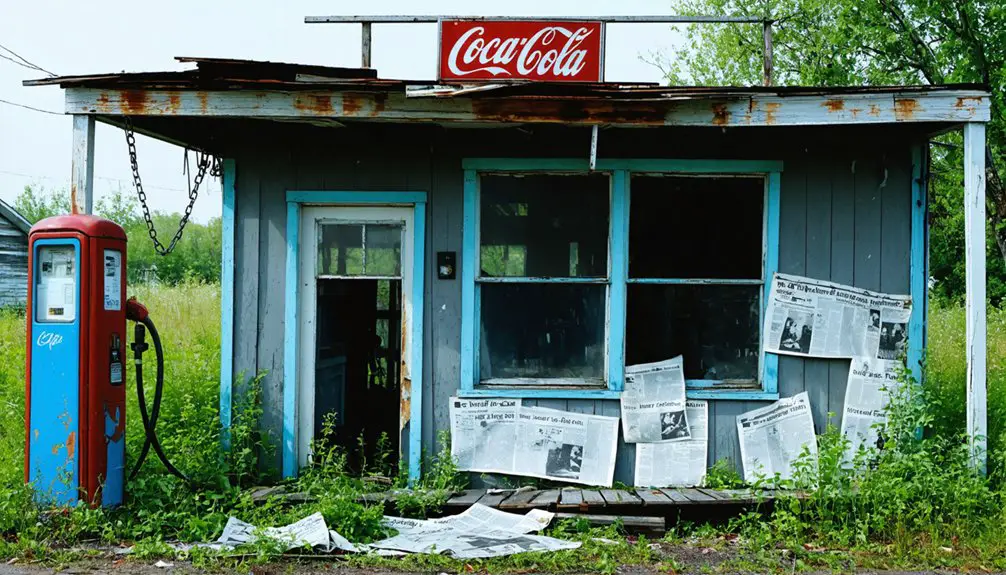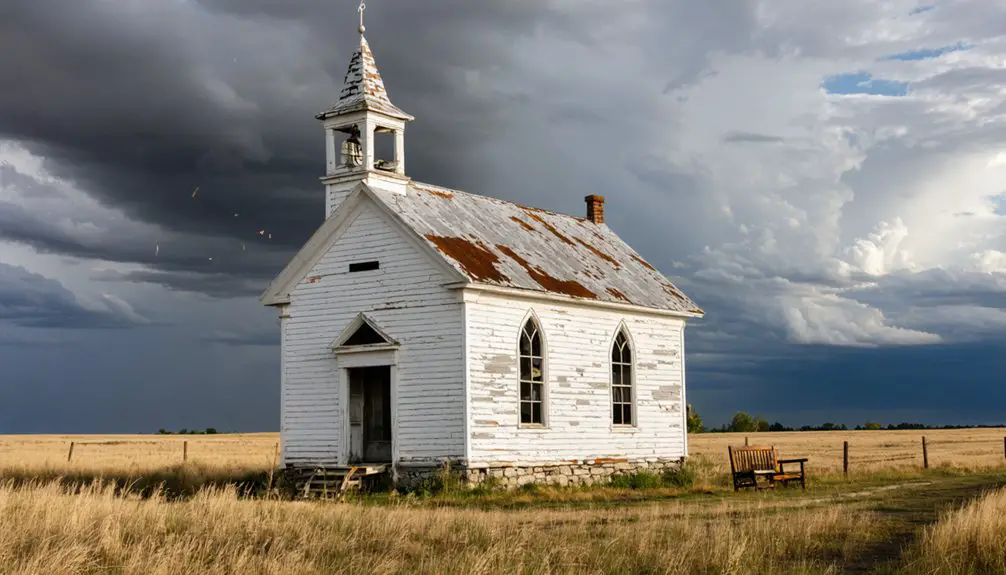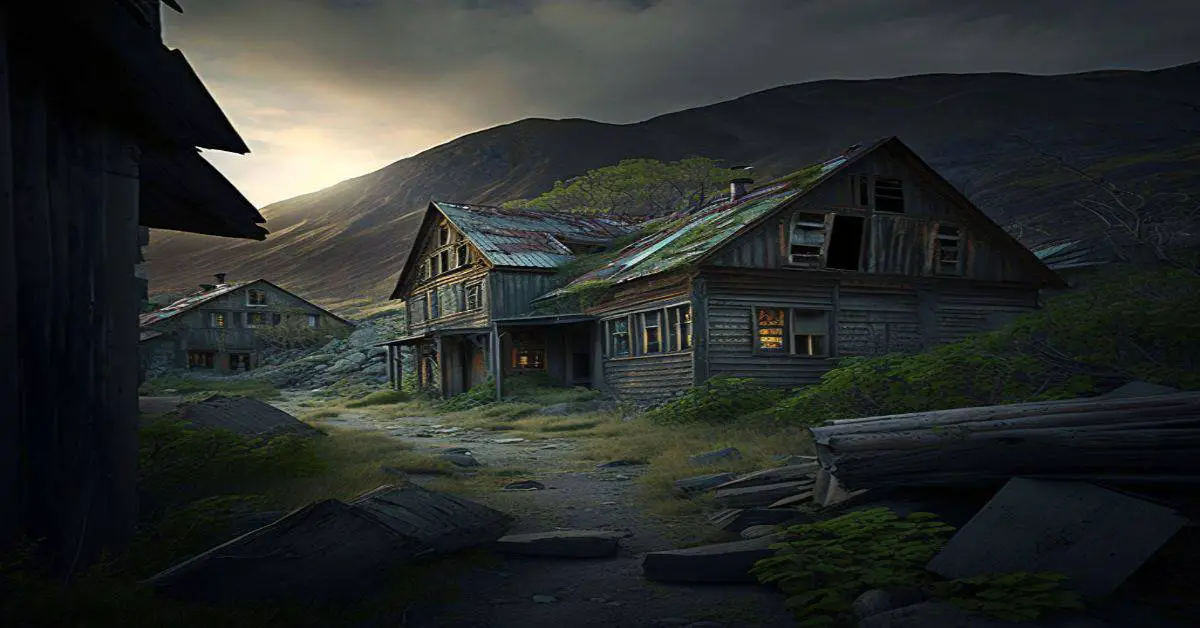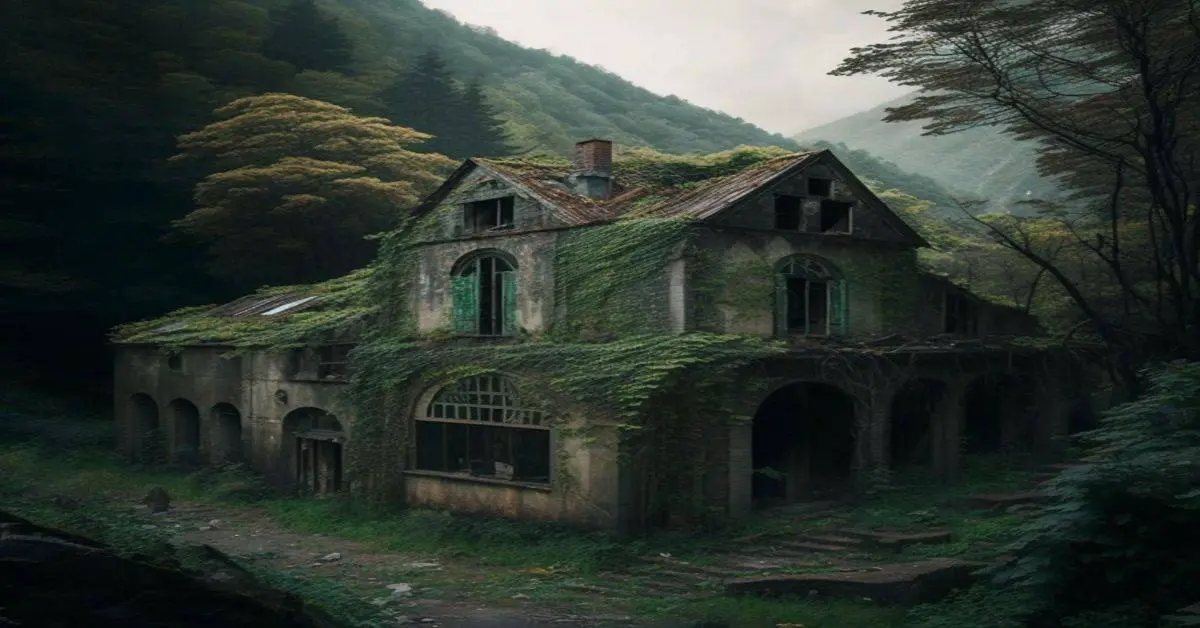You’ll find Milton’s ghost town remnants along the old Grand Trunk Railroad line, where it emerged as a thriving pioneer settlement in the 1830s. The community peaked at over 200 residents, anchored by its Methodist Church and essential railroad services. While most structures have vanished, Hart Cemetery remains as a solitary witness to Milton’s past. The town’s transformation from bustling rail stop to quiet historical footnote holds fascinating details about Michigan’s pioneering spirit.
Key Takeaways
- Milton originated as a Grand Trunk Railroad stop in the 1830s, reaching a peak population of over 200 residents before declining.
- The community thrived around its Methodist Church (1882) and railroad connections until economic setbacks in the late 19th century.
- Essential businesses including sawmills, grist mills, and general stores closed as neighboring towns captured commercial advantages.
- Almost no physical structures remain today, with churches lost to arson and decay, leaving only Hart Cemetery as evidence.
- The town’s decline was primarily caused by being bypassed by major railroad lines and subsequent loss of commercial traffic.
Origins and Early Settlement
While many Michigan ghost towns faded into obscurity, Milton’s origins can be traced definitively to its establishment as a Grand Trunk Railroad stop in the 1830s.
Like Grand River Indian Trail travelers before them, the settlement’s earliest roots at the intersection of 24 Mile Road and Gratiot, where pioneer challenges shaped the community’s development. In 1837, Robert Milton’s appointment as the first postmaster marked the settlement’s official recognition, and you can imagine the bustle of railroad workers and settlers transforming the wilderness into a frontier outpost.
The settlement dynamics reflected the era’s westward expansion, with necessary services sprouting up to support the growing population. Milton’s strategic location along the railway proved essential, as it provided the crucial transportation link that would sustain the community through its early years. The village reached its peak with over 200 residents before its eventual decline in the 1930s.
The Rise of a Pioneer Community
You’ll find that Milton’s pioneering spirit took root in 1882 with the construction of the Methodist Church, which served as both a spiritual anchor and social gathering hub for the growing settlement.
The arrival of rail transportation systems through the region accelerated Milton’s development, drawing more settlers and enabling faster movement of agricultural goods to market. Much like the cultural revolution sweeping through Kalamazoo in the 1960s, these transportation advances brought dramatic social changes to the area. Similar to Gilliam County’s rural charm today, the region offered a peaceful countryside setting that attracted families seeking a simpler way of life.
These developments transformed Milton from scattered homesteads into a more cohesive pioneer community, with the church and railroad working in tandem to shape the township’s early growth patterns.
Early Methodist Foundations
As Methodist circuit riders ventured into Michigan’s frontier regions in 1831, they established the first religious services in Milton Township at the home of Canon Smith, a Delaware native who’d purchased land there two years earlier.
You’ll find that these early gatherings laid the groundwork for Smith’s Chapel, which was formally organized in 1839 and built the following year.
The chapel’s Methodist architecture reflected the pioneer spirit, featuring a sturdy wood frame construction with clapboard siding and a fieldstone foundation.
At 40 by 48 feet, it included distinctive round-arch windows and a gabled entrance with an oculus.
Circuit preachers continued to serve the growing congregation, transforming this frontier outpost into a thriving spiritual and social center that shaped Milton’s early development.
Local carpenter James Taylor constructed the chapel for $1,200.
The chapel remained active for over a century until regular services ended in 1967.
Railroad Settlement Growth
When the Wisconsin & Michigan Railway incorporated in 1893, it transformed Milton from a rural outpost into a bustling pioneer settlement. You could witness the railroad’s influence as construction camps dotted the landscape, complete with bunk cars and dining facilities for the steady stream of workers pouring into the region. Surplus World’s Fair rail was used to construct the mainline tracks through Milton.
The settlement patterns quickly evolved as Milton and Milton Depot emerged as crucial railroad stops. You’d find merchants establishing stores, mill owners setting up operations, and pioneering families building homes near the tracks. Like many railroad towns in Michigan, Milton received a land grant funded railway that helped drive its early development.
The railway’s presence sparked rapid development of essential community features – schools, churches, and shops sprang up to serve the growing population. The rail connection to Chicago’s steel markets and the Great Lakes shipping network positioned Milton as a strategic hub in Michigan’s industrial expansion.
Religious Life and Sacred Places
You’ll discover that Milton’s early religious landscape featured Baptist, Methodist, and Congregational churches serving the spiritual needs of pioneers.
Over time, you’ll note how these sacred spaces transformed – the Methodist church became a grain elevator, while the Congregational church served as Chesterfield Township’s municipal building before its destruction by arson.
The physical erasure of Milton’s original churches, unlike some Michigan ghost towns that maintain their religious structures, leaves only cemetery grounds and historical records to tell the story of the community’s religious heritage. This stands in contrast to places like Central Mine, where the Methodist church endures as a cherished gathering place for annual reunions since 1907. Just like nearby Millville, these churches were once vital gathering places for the local community during the booming mill era.
Churches of Milton Past
The spiritual landscape of Milton, Michigan once featured three prominent churches that served as cornerstones of community life: Baptist, Methodist, and Congregational congregations.
These sacred spaces showcased typical 19th-century church architecture while hosting regular community gatherings and worship services.
You won’t find these historic buildings standing today. The Methodist church’s structure found new life as a grain elevator after facing bankruptcy.
The Congregational church briefly served as Chesterfield Township’s municipal building before arsonists destroyed it just before its planned relocation to a historical district.
The Baptist church’s fate remains undocumented in surviving records.
Where these churches once stood, you’ll now find modern developments like Milton Meadows housing, with no visible traces of the town’s religious heritage remaining.
Congregation to Community Center
As religious attendance dwindled across Milton’s congregations in the late 1800s, local church leaders pioneered an innovative solution that would help preserve their sacred spaces while serving broader community needs.
They embraced adaptive reuse, transforming their buildings into vibrant multi-purpose centers that hosted everything from town meetings to social gatherings.
You’ll find that this transformation wasn’t just about saving buildings – it fundamentally strengthened Milton’s social fabric. The spaces maintained their spiritual significance while supporting expanded community engagement through educational programs, cultural celebrations, and civic functions.
Local volunteers worked tirelessly to maintain these centers, which became vital gathering places for scattered rural families.
Even as Milton’s population declined, these reimagined sacred spaces continued to anchor the community’s identity and preserve its cultural heritage.
Sacred Buildings Lost Forever
Milton’s sacred landscape suffered irreversible losses as its three principal churches – Baptist, Methodist, and Congregational – gradually vanished from existence.
While the Baptist church’s fate remains unclear, you can trace the Methodist church’s transformation into a grain elevator in New Haven, forever altering its sacred purpose.
The Congregational church met an especially tragic end when fire destroyed it just before its planned relocation to a historical site.
These sacred structures represented more than just places of worship – they were essential centers of community identity where pioneers gathered, socialized, and supported one another through hardship.
Unlike some Michigan ghost towns that have preserved their religious heritage, Milton’s churches couldn’t be saved, leaving a permanent void in the town’s historical fabric.
Commercial and Social Development

During its peak years, this once-bustling Michigan community featured a diverse mix of commercial and social establishments that served its pioneering residents.
You’d have found essential industries like a saw mill and grist mill powering the local economy, while a general store supplied daily necessities. The commercial history included two blacksmith shops, a wagon shop, and a hotel serving travelers.
For social cohesion, Milton’s three churches – Baptist, Methodist, and Congregational – formed the heart of community life.
In modern times, you’ll find the area transformed with new commercial developments near 24 Mile Road and Gratiot, including a shopping center with a 7/11, grocery store, and restaurant.
While these new establishments bring economic activity, they bear little resemblance to Milton’s original character.
The Town’s Gradual Decline
The gradual decline of this once-thriving village began with a perfect storm of economic setbacks in the late 19th century.
You’ll find Milton’s downfall closely tied to its absence from major railroad lines, which proved disastrous as neighboring towns captured crucial commercial traffic. The town’s economic challenges intensified with the closure of key businesses, leading to a cascade of losses that tested community resilience.
When railroads bypassed Milton, neighboring towns seized the commercial advantage, triggering a devastating economic spiral for the community.
As industry dwindled, Milton’s social fabric unraveled.
You can trace the town’s dissolution through the bankruptcy of its Methodist church, the burning of its Congregational Church, and the exodus of its population.
Vanishing Historical Structures
As years passed following Milton’s initial decline, historic structures gradually disappeared from the landscape one by one.
You’ll find virtually no trace of the original village today – most buildings succumbed to architectural decay, fire, or demolition. The three historic churches met particularly tragic fates: arsonists destroyed the Congregational church before historical preservation efforts could save it, while the Methodist church briefly survived as a converted grain elevator before its eventual loss.
The village’s transformation has been complete, with modern development erasing nearly all physical evidence of Milton’s past.
Only one or two original houses might remain, though they’re difficult to verify. The nearby Hart Cemetery stands as one of the few tangible links to this vanished community.
Modern Transformation and Growth
While Milton’s historic structures vanished over time, modern development has reimagined the area’s identity through The Milton – a stunning transformation of the 1931 Heritage Tower into a thriving mixed-use development.
You’ll find this urban transformation has breathed new life into downtown Battle Creek, anchoring the community’s modern revitalization efforts.
The $38 million project exemplifies how historic preservation can align perfectly with contemporary needs.
- 85 modern apartments, including micro-units, now attract young professionals and Kellogg employees seeking downtown living.
- Commercial spaces and ground-floor retail create a vibrant mixed-use environment that supports roughly 6,000 downtown workers.
- The project’s success has catalyzed additional development, with full occupancy and waiting lists demonstrating strong demand for urban living options.
Legacy in Local Memory
Once home to over 200 residents and three churches, Milton’s legacy now lives primarily through scattered records, local folklore, and repurposed land.
You’ll find its cultural memory preserved through township historical records and stories of early settlers’ lives, while community folklore has embellished certain events – like attributing the Congregational church’s destruction to poltergeists rather than suspected arson.
Though you won’t see physical remnants of the original village at 24 Mile Road and Gratiot today, Milton’s influence persists in modern development names and local narratives.
While Milton’s buildings have vanished from their original site, its spirit lives on through area landmarks and community stories.
Historical societies continue documenting its transformation from a thriving community to a ghost town, making Milton’s story emblematic of Michigan’s vanished rural settlements and their lasting impact on regional identity.
Frequently Asked Questions
Were There Any Notable Crimes or Incidents in Milton’s History?
You’ll find few unsolved mysteries or violent incidents here, except for the notorious arson that destroyed the Congregational Church before its planned relocation – the perpetrators were never caught.
What Native American Tribes Originally Inhabited the Milton Area?
Like ancient spirits of the land, you’ll find the Chippewa (Ojibwe) tribes were the primary inhabitants, with significant Ottawa influence nearby. The Potawatomi and Miami also shared these ancestral grounds.
How Did Milton Compare in Size to Neighboring Townships?
You’ll find Milton’s 21.3 square miles aligns closely with typical township sizes, though its moderate population density and mixed land development patterns place it squarely in the middle of neighboring communities.
What Happened to the Cemetery Records From Milton’s Early Days?
Like footprints in shifting sand, you’ll find early cemetery records have vanished – whether through poor preservation, neglect, or nonexistent historical documentation. Only weathered gravestones remain to tell their stories.
Did Any Famous Historical Figures Ever Visit or Stay in Milton?
You won’t find records of any famous visitors in the town’s history. The village’s historical significance stems from its local community life rather than notable personalities passing through.
References
- https://www.youtube.com/watch?v=IeayU8CmF5w
- https://patch.com/michigan/newbaltimore/ghost-towns-of-chesterfield-s-past
- https://www.nailhed.com/2017/10/the-ghost-town-that-moved.html
- https://www.nps.gov/slbe/learn/historyculture/ghosttowns.htm
- https://en.wikipedia.org/wiki/List_of_ghost_towns_in_Michigan
- http://www.kristinascarcelli.com/michigans-ghost-towns-kensington-village/
- https://www.youtube.com/watch?v=7-vjuqiGWJU
- https://miltontownship.org/wp-content/uploads/2018/11/masterplan-1.pdf
- https://wmualumni.org/stories/alumni-news/alumni-spotlight-barry-d-wood
- https://pioneercdc.com


